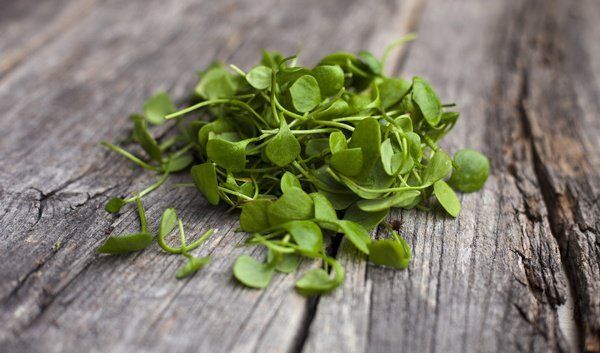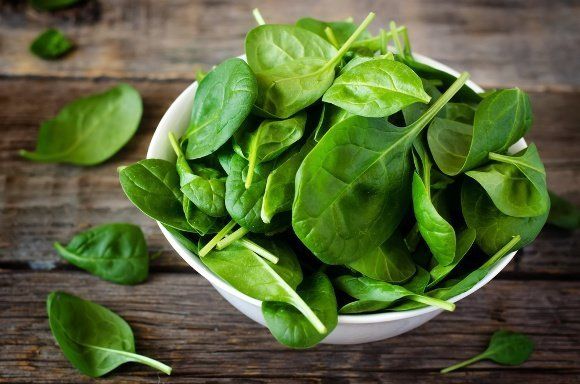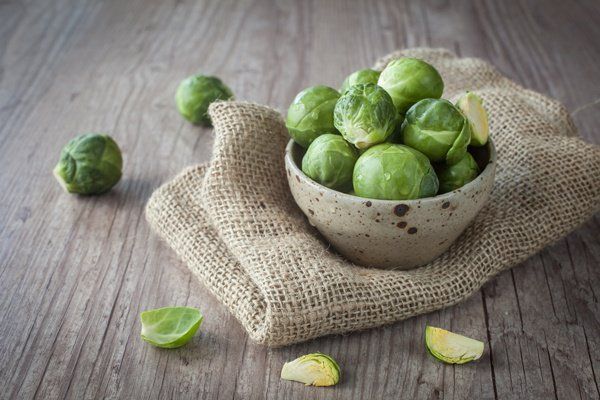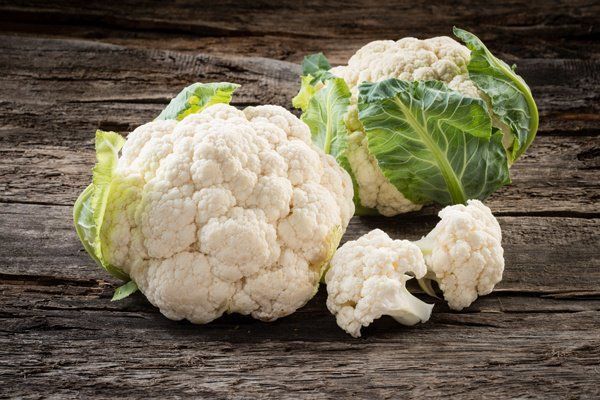
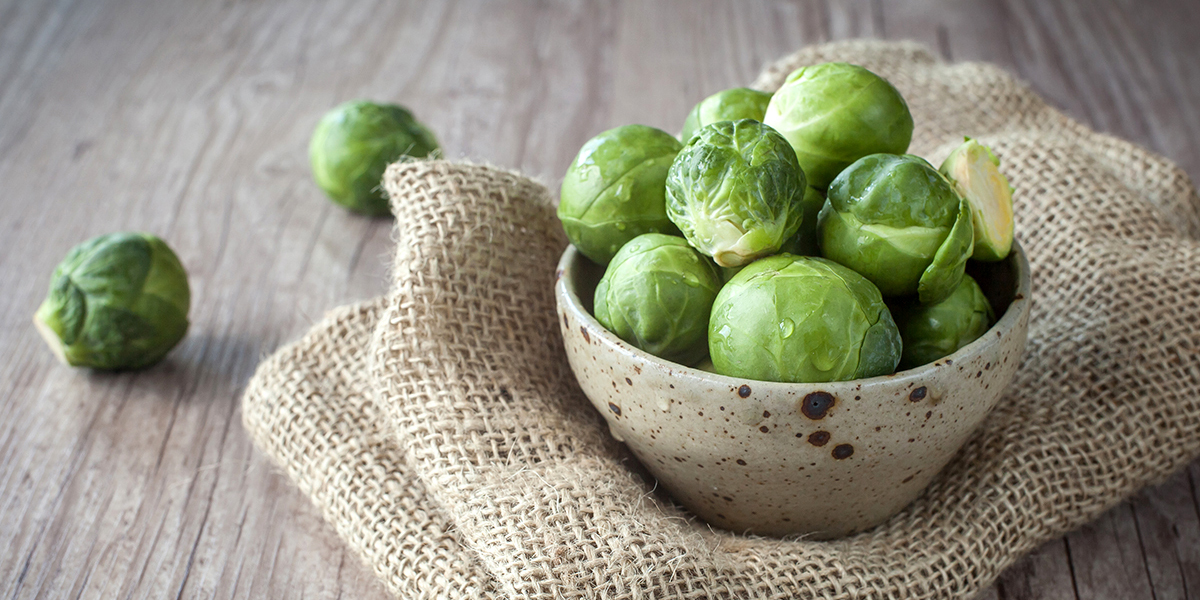
By Arlene Semeco
Protein is an essential nutrient your body uses to build and repair tissues.
Although animal foods are usually highest in protein, some plants also contain decent amounts.
Here are 10 healthy vegetables that contain a fair amount of protein.
1. Watercress
Watercress is a cruciferous plant that grows in water and has a high protein content.
One cup (34 grams) of chopped watercress contains 0.8 grams of protein and 100 percent of your RDI of vitamin K. It also has good amounts of B vitamins, calcium, manganese, potassium, vitamin A and vitamin C (1).
Moreover, watercress has been shown to offer antioxidant protection. It also contains phenolic compounds that may help prevent cancer (2, 3, 4, 5, 6).
Avoid boiling watercress in water, since this will decrease the antioxidant content. Instead, try eating raw watercress in salads, stuff it in sandwiches or blend it in smoothies (7).
Protein Content: A 1-cup (34-gram) serving of watercress contains 0.8 grams of protein, while 100 grams of watercress contains 2.3 grams. Protein accounts for 50 percent of its calories.
2. Alfalfa Sprouts
Alfalfa sprouts are very low in calories, but rich in nutrients.
One cup (33 grams) of alfalfa sprouts provides 1.3 grams of protein. This vegetable also has decent amounts of folate, B vitamins, iron, magnesium, phosphorus, zinc, copper, and vitamins K and C (8).
A couple of studies performed in animals demonstrated that alfalfa sprouts can reduce cholesterol levels. This was thought to be due to their high content of saponins, a group of compounds that can lower cholesterol (9, 10).
One study treated 15 people who had high blood lipid levels with 40 grams of alfalfa seeds, three times daily, for eight weeks. These people had a 17 percent reduction in total cholesterol and an 18 percent reduction in “bad” LDL cholesterol (11).
Alfalfa sprouts have also been shown to decrease inflammation, reduce symptoms of menopause and help treat and prevent osteoporosis (12, 13, 14, 15).
Protein Content: A 1-cup (33-gram) serving of alfalfa sprouts contains 1.3 grams of protein, while 100 grams of alfalfa sprouts contains 4 grams. Protein accounts for 42 percent of its calories.
3. Spinach
Spinach is one of the most nutrient-dense leafy green vegetables you can eat.
Protein accounts for 30 percent of its calories and it contains all the essential amino acids. A 1-cup (30-gram) serving provides 1 gram of protein and 181 percent of the RDI for vitamin K (16).
It also contains high amounts of folate, manganese, magnesium, iron, potassium, calcium, vitamin A and vitamin C (16).
Besides its high protein content, spinach contains plant compounds that can increase antioxidant defense and reduce inflammation (17).
In one study, 20 athletes who took spinach supplements for 14 days experienced reduced oxidative stress and muscle damage (18).
Another study gave nitrate-rich spinach to healthy participants and measured its effects on their levels of nitric oxide, a signaling molecule normally used in the body to widen the blood vessels.
The study also measured endothelial function and blood pressure. Nitrate-rich spinach was found to increase nitric oxide, improve endothelial function and lower blood pressure, all of which can improve heart health (19).
Lastly, regularly consuming spinach has been linked to as much as a 44 percent lower risk of breast cancer (20).
Protein Content: A 1-cup (30-gram) serving of raw spinach contains 0.9 grams of protein, while 100 grams of spinach contains 2.9 grams. Protein accounts for 30 percent of the calories in spinach.
4. Chinese Cabbage or Bok Choy
Chinese cabbage, also known as bok choy, is a good source of vegetable protein.
One cup (70 grams) of Chinese cabbage contains 1 gram of protein. It’s also an excellent source of folate, calcium, potassium, manganese, iron and vitamins A, C and K (21).
A number of cell studies showed that Chinese cabbage is rich in compounds with antioxidant activity. Its outer leaves appear to contain the most antioxidants. Plus, it has been shown to have anti-inflammatory properties (22, 23, 24).
It seems like some studies agree that high intakes of Brassica vegetables, like Chinese cabbage, can decrease the risk of prostate cancer (25).
Additionally, an animal study showed that taking supplements of Chinese cabbage powder reduced the risk of liver cancer (26).
Chinese cabbage is used in many Asian recipes, such as stir-fries, kimchi, soups and spring rolls.
Protein Content: A 1-cup (70-gram) serving of shredded Chinese cabbage contains 1 gram of protein, while 100 grams of Chinese cabbage contain 1.5 grams. Protein accounts for 28 percent of its calories.
5. Asparagus
Asparagus is a very popular vegetable with a high nutrient content.
A 1-cup (134-gram) serving contains 2.9 grams of protein. It is also an excellent source of B vitamins, folate, copper, manganese, phosphorus, magnesium, and vitamins A and K (27).
Asparagus is thought to have anti-inflammatory and anticancer properties (28).
It also contains fructooligosaccharides (FOS), which provide prebiotic benefits, stimulating the growth of friendly intestinal bacteria (29, 30).
Asparagus can be cooked in the oven, grilled, boiled, steamed or pan-fried and it is wonderful in salads or as a side dish.
Protein Content: A 1-cup (134-gram) serving of asparagus contains 2.9 grams of protein, while 100 grams of asparagus contains 2.2 grams. Protein accounts for 27 percent of the calories in asparagus.
6. Mustard Greens
Mustard greens belong to the Brassica family and are very similar to kale but with a distinct mustard flavor.
A 1-cup (56-gram) serving of mustard greens provides 1.5 grams of protein, as well as 348 percent of the RDI for vitamin K and 118 percent of the RDI for vitamin A. It is also high in manganese, calcium, potassium, B vitamins, vitamin C and vitamin E (31).
Mustard greens, like other Brassica vegetables, contain phenolic compounds that give them antioxidant properties (24, 32).
A test-tube study demonstrated that steaming mustard greens increases their ability to bind to bile acids. This may help them reduce cholesterol levels (33).
The same study found that steaming may have similar positive effects on collard greens, kale, cabbage, green peppers and broccoli.
This veggie can be steamed, boiled, sautéed or simply eaten raw in salads.
Protein Content: A 1-cup (56-gram) serving of chopped mustard greens contains 1.5 grams of protein, while 100 grams of mustard greens contain 2.7 grams. Protein accounts for 25 percent of the calories in mustard greens.
7. Broccoli
Broccoli is a very popular vegetable that also happens to be high in protein. It can be enjoyed raw or cooked.
A 1-cup (91-gram) serving of raw chopped broccoli can provide 2.6 grams of protein, including all the essential amino acids. It also contains plenty of folate, manganese, potassium, phosphorus and vitamins C and K (34).
For all these nutrients, a 1-cup serving of broccoli contains only 31 calories.
Broccoli also provides high amounts of plant compounds and flavonoids, like kaempferol. These can provide antioxidant and anti-inflammatory benefits (35, 36).
Similar to mustard greens, broccoli has a high content of glucosinolates, compounds that may help reduce the risk of cancer (37, 38, 39).
Like mustard greens, broccoli has a higher capacity to bind to bile acid when it’s steamed than when it’s raw, so eating steamed broccoli may help reduce cholesterol levels in your blood (33).
Additionally, broccoli can help improve liver health by stimulating detoxification and the production of antioxidant compounds in the liver (40).
Broccoli can be steamed, roasted, baked or sautéed. You can use it to make tasty side dishes, soups and sauces.
Protein Content: A 1-cup (91-gram) serving of chopped broccoli contains 2.6 grams of protein, while 100 grams of broccoli contain 2.8 grams. Protein accounts for 20 percent of the calories in broccoli.
8. Collard Greens
Collard greens are a dark green, loose-leafed vegetable from the same family as kale, broccoli and cauliflower.
They are a source of fatty acids and plant protein. A 1-cup (36-gram) serving contains 0.9 grams of protein with only about 11 calories. The vitamin K content is particularly remarkable, with 230 percent of the RDI in a 1-cup serving (41).
Additionally, collard greens are an excellent source of calcium, potassium and manganese (41).
As another member of the Brassica family, collard greens are a good source of phenolic compounds and antioxidants (32, 42).
The high levels of antioxidants in collard greens have been linked to a decreased risk of developing prostate cancer (25).
One study reported that people who eat cruciferous vegetables like collard greens are less likely to be diagnosed with breast cancer (43).
Collard greens can also bind to bile acids in your gut, helping to reduce your cholesterol levels. One study showed that steam cooking boosts this benefit (33).
You can enjoy collard greens steamed or sautéed. They’re particularly tasty mixed with other veggies like onions and mushrooms.
Protein Content: A 1-cup (36-gram) serving of chopped collard greens contains 0.9 grams of protein, while 100 grams of collard greens contain 2.5 grams. Protein accounts for 20 percent of the calories in collard greens.
9. Brussels Sprouts
Brussels sprouts can be a great addition to your diet. They’re a good source of protein, fiber and vitamins.
A 1-cup (88-gram) serving contains 3 grams of protein and up to 3.3 grams of fiber. Brussels sprouts are also rich in folate, manganese, magnesium, potassium, iron, calcium and vitamins K, C, A and B6 (44).
A study in animals showed that Brussels sprouts can promote the growth and health of intestinal bacteria and stimulate the production of short-chain fatty acids in the gut (45).
People usually cook Brussels sprouts by boiling, steaming, grilling or roasting. They are an ideal side dish.
Protein Content: A 1-cup (88-gram) serving of Brussels sprouts contains 3 grams of protein, while 100 grams of Brussels sprouts contain 3.4 grams. Protein accounts for 19 percent of the calories in this food.
10. Cauliflower
Like broccoli, cauliflower provides a high amount of protein for the number of calories it delivers.
One cup (100 grams) of cauliflower has 2 grams of protein and 25 calories. It is also a great source of vitamins C and K and minerals like potassium, manganese, magnesium, phosphorus, calcium and iron (46).
Cauliflower also contains a high amount of a particular glucosinolate compound called sinigrin. This is thought to have anticancer, antioxidant and anti-inflammatory properties (38, 47, 48).
The glucosinolate content of cauliflower may drop significantly when it’s cooked. Therefore, cauliflower may be better eaten raw (48).
However, cauliflower is also high in other antioxidants that are preserved during cooking and may even increase after cauliflower is steamed or microwaved (49).
Like several other vegetables on this list, cauliflower has the potential to reduce cholesterol levels because of its capacity to bind bile acids. Steaming cauliflower increases this capacity (50).
Cauliflower is a versatile vegetable that can be adapted to a variety of recipes. In many cases, it can be used as a substitute for starchy carbs.
Protein Content: A 1-cup serving of cauliflower weighs 100 grams and contains 2 grams of protein. Protein accounts for 19 percent of its calories.
Take Home Message
Even though vegetables are not very high in protein compared to some other foods, many of them contain good amounts of protein relative to their calorie content.
Plus, these vegetables are high in many other nutrients and have been linked to all sorts of health benefits.
These protein-rich vegetables are a great way to increase the protein and nutrient content of your diet without adding many calories.
Reposted with permission from our media associate Authority Nutrition.

 233k
233k  41k
41k  Subscribe
Subscribe 
